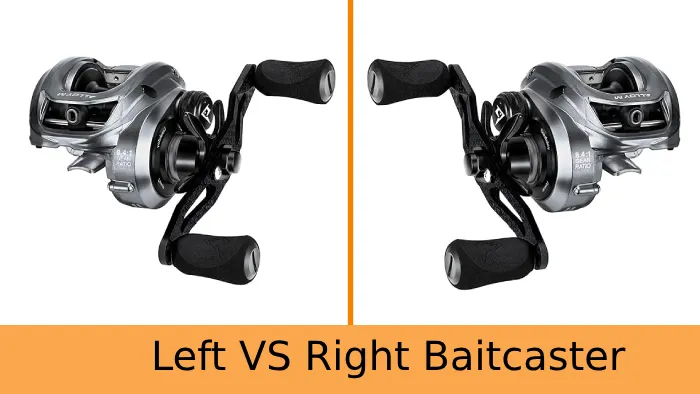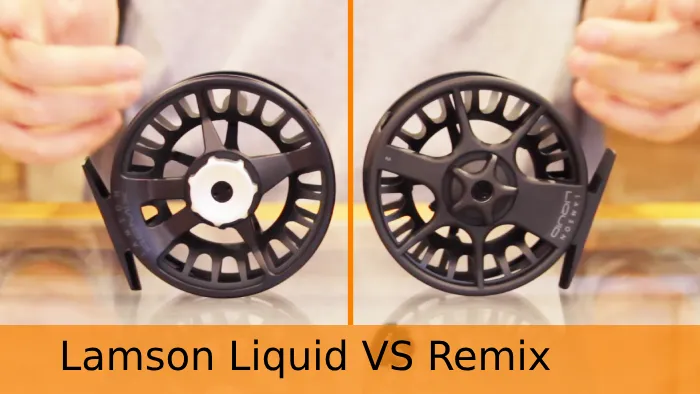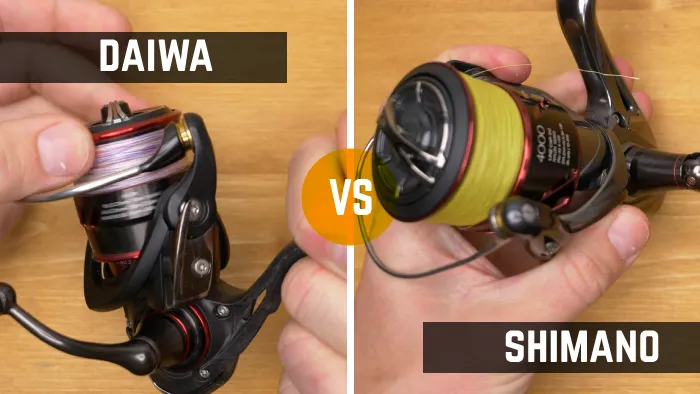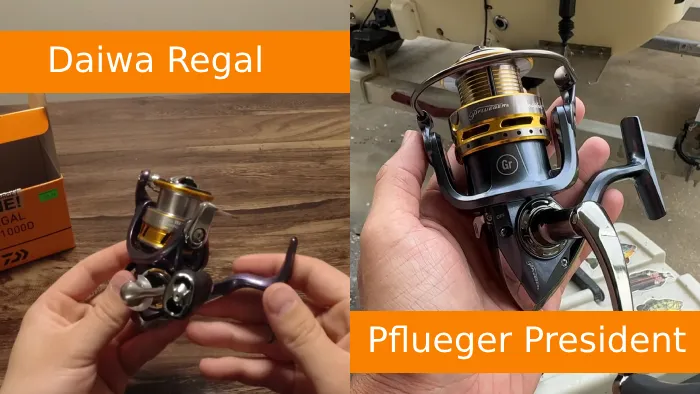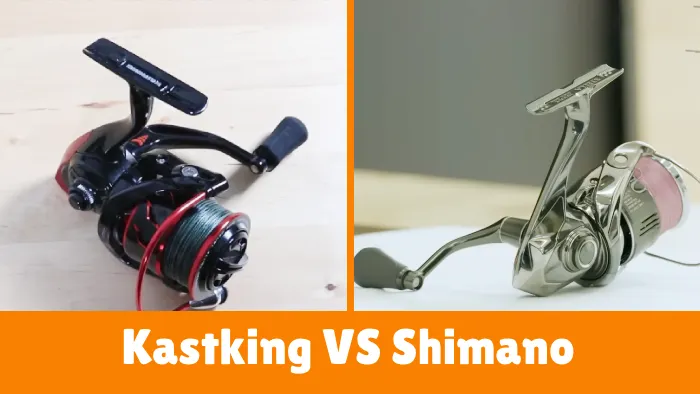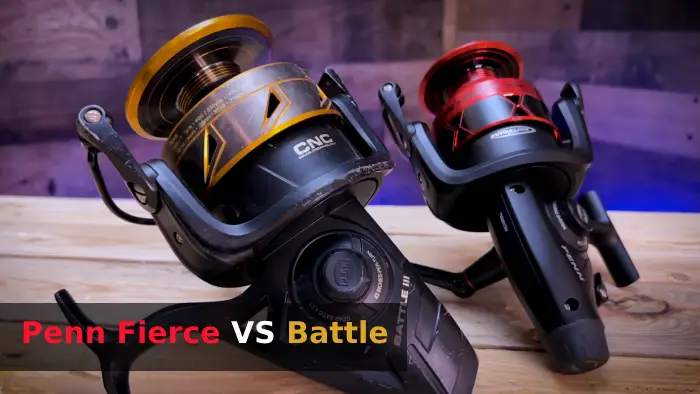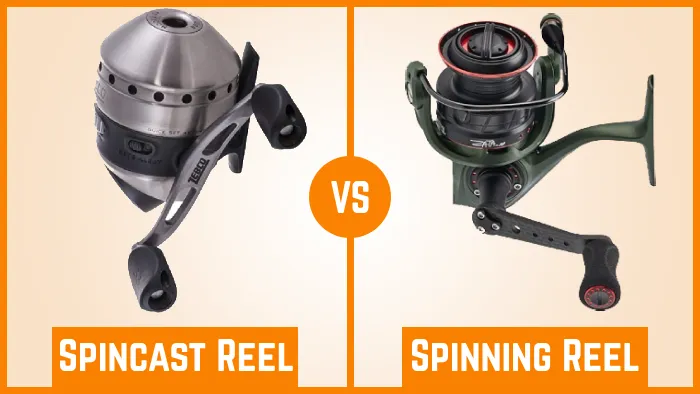Left vs Right Baitcaster Reels for Fishing: Main 3 Differences
The right reel can enhance your fishing experience and help you reel in a big catch. While some may think it’s simply a matter of personal fishing preference, several angling factors come into play when making this decision.
When selecting a baitcaster reel, there are two critical considerations: the reel’s handle orientation and your dominant hand preference. Choosing between left-handed (LH) and right-handed (RH) baitcaster reels can affect your casting accuracy, muscle memory, and overall comfort while fishing.
Today, we will explore the differences between LH and RH baitcaster reels and help you decide which one you should choose based on your requirements. So keep reading for detailed information.
Differences Between Left & Right Baitcaster Reels for Fishing
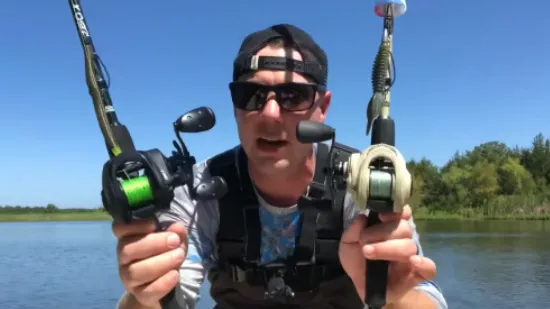
Choosing the appropriate reel can significantly impact your fishing experience. Consider these differences when choosing a baitcasting reel:
- Handle orientation
- Dominant hand preference
- Casting accuracy
Here’s a breakdown of these differences:
1. Handle Orientation
The handle orientation is the primary difference between left and right-handed bait caster reels. A left-handed reel has the handle on the left side, while a right-handed reel has the handle on the right side.
Left-handed anglers prefer left-handed bait caster reels, allowing them to use their dominant hand while casting and reeling.
On the other hand, right-handed anglers usually opt for right-handed baitcasting reels as this configuration feels comfortable for their dominant hand.
2. Dominant Hand Preference
The dominant hand preference is another crucial factor when choosing between left and right-handed bait caster reels. Dominant hand preference largely depends on an angler’s muscle memory and comfort.
Left-handed anglers commonly find left-handed baitcaster reels more comfortable and intuitive to use, while right-handed anglers often prefer right-handed baitcaster reels as it aligns with the dominant hand for both casting and reeling actions.
3. Casting Accuracy
Casting accuracy is an essential aspect of fishing. Some anglers argue that hand orientation can impact casting accuracy.
Left-handed anglers may argue that using a left-handed bait caster reel provides better casting accuracy for right-handed casters, allowing them to control the fishing rod with their dominant hand during the cast.
However, some right-handed anglers may argue that right-handed bait caster reels provide better casting accuracy as it aligns with their dominant hand. However, casting accuracy is highly dependent on an angler’s skills and practice rather than the hand orientation of the reel.
What to Consider When Choosing Left or Right Baitcaster Reels?
When choosing between left or right baitcaster reels, you should consider a few factors.
1. Consider Your Dominant Hand
If you’re right-handed, you usually prefer a right-handed baitcasting reel because it feels more natural to crank the reel handle with your dominant hand. This preference is based on right-handed individuals being more coordinated and comfortable using their right hand for fine motor tasks.
When using a right-handed bait caster reel, your dominant hand can control the handle, providing a smoother and more efficient operation. Alternatively, left-handed individuals may find using a left-handed bait caster reel more comfortable, allowing them to crank with their dominant hand.
2. Think About Casting Comfort and Control
Consider your comfort and control over the reel, ensuring that it feels natural and provides efficient operation for casting with either a left or right bait caster. There’s a debate between left-handed and right-handed baitcasting reels. The choice ultimately depends on your personal preference and fishing style.
The key is to find a reel that allows for smooth casting and comfortable handling, regardless of whether you cast with your dominant or non-dominant hand.
3. Ambidextrous Reels
Consider the benefits of ambidextrous (dual-handed) reels when deciding between left or right bait caster reels. These reels offer the convenience of switching hands easily, making them a great choice for ambidextrous people who need to switch hands frequently while fishing.
With an ambidextrous reel, you can quickly and easily switch from casting with your right hand to casting with your left hand, or vice versa, without reconfiguring the reel. This can save you time and effort on the water, allowing you to focus more on fishing and less on adjusting your gear.
Also, ambidextrous reels can be a good option for those who like to share their gear with others, as they can be easily adjusted to accommodate different anglers’ preferences.
4. Your Muscle Memory
If you’ve been using one-hand orientation for a while, your muscle memory may make switching to the opposite hand difficult. Muscle memory is a term used to describe the ability of our muscles to remember and repeat specific movements.
When we repeatedly use the same hand for a particular activity, our muscles become accustomed to that movement pattern. Switching to the opposite hand can make it challenging, as our muscles aren’t familiar with the new movement pattern.
5. Your Experience Level
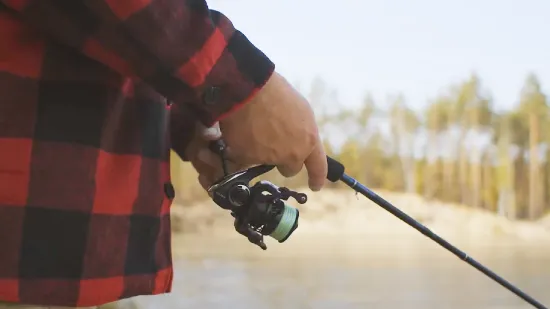
When choosing between left or right baitcasting reels, your experience level plays a significant role. If you’re just starting, it’s recommended that you use a spinning reel. This way, you can get the hang of casting without spending too much time setting up the reel.
However, if you’re an experienced fisherman looking for more accuracy and precision, consider investing in an ambidextrous baitcasting reel. Although it will take some time and effort to master, it will be well worth it.
6. Accuracy
You cannot overlook accuracy when choosing between left and right bait caster reels. With the proper baitcasting reel, you can accurately aim and hit your target spot-on every time, giving you that competitive edge in the water. However, mastering a baitcasting reel will take time, patience, and much practice.
7. Risk of Tangling and Jamming
An important factor to consider when selecting a right or left bait caster reel is the risk of jamming and tangling. There’s nothing more frustrating than spending your day dealing with the hassle of untangling the line and ruining your chances of catching the big one.
This consideration is particularly important for beginners who may not have as much experience with fishing reels. Make sure you choose a reel with a lower risk of tangling and jamming so you can focus on your technique and enjoy your time out on the water.
Do I need a left or right-hand reel?
You should consider which hand feels more comfortable for casting and choose a reel accordingly. If you’re a right-handed angler, using a left-handed casting reel with the crank handle on the left side is recommended. This allows you to hold the rod in your right hand and easily reel with your left hand.
Conversely, left-handed anglers should opt for a right-handed reel, with the crank handle on the right side. This setup allows for a more natural and comfortable fishing experience.
Should I reel with my dominant hand?
Reeling with your dominant hand can improve your overall control and sensitivity while fishing. Using your dominant hand to reel, you can have better dexterity and speed while taking in line. This can be especially beneficial when trying to reel in a fish quickly or when you need to make precision adjustments while fighting a fish.
Using your dominant hand gives you a stronger grip on the reel handle, allowing for better control and leverage. This can significantly affect your ability to land a fish successfully.
Also, reeling with your dominant hand eliminates the need to switch between casting and fighting fish, saving you time and improving your overall fishing experience.
Why are most bait casters right-handed?
Baitcasting reels have become a staple tool for any avid angler, both amateur and professional. But have you ever wondered why most baitcasters are designed for right-handed use?
Early reels were initially created with the handle on the right side because it was the most crucial feature of a reel that didn’t cast. As level winds eventually evolved into bait casters, manufacturers continued using the same tooling and design, predominantly favoring right-handed anglers.
This informative insight highlights why most baitcasting reels remain right-handed to this day and sets the tone for further exploration into the world of fishing gear.
Can I switch hands on Baitcaster?
You can definitely switch hands on a bait caster. While most bait casters are designed for right-handed anglers, you can easily switch the reel arm to the left side to accommodate left-handed anglers.
Many anglers may wonder if switching hands while using a bait caster is possible, especially if they’re left-handed or prefer using their non-dominant hand for cranking the reel arm. This allows for a more comfortable and controlled casting experience.
Can a right-handed person use a left-handed baitcaster?
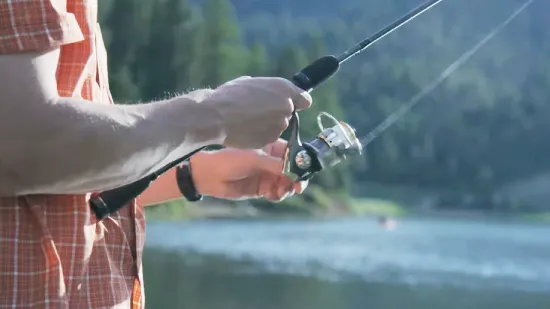
While it may seem counterintuitive at first, using a left-handed baitcaster allows you to always keep your dominant hand, which is your right hand, on the reel. This means you don’t have to switch hands every time you cast, resulting in a smoother and more efficient fly fishing experience in New Hampshire or other places.
You can better control your casting accuracy and distance by using your dominant hand to control the reel. Using a left-handed bait caster as a right-handed person can also make it easier to perform other actions, such as adjusting the drag or reeling in your catch.
Improve Your Fishing Experience With Proper Baitcaster
Choosing the right baitcaster reel handle orientation can significantly improve your fishing experience and overall success. Factors such as your dominant hand preference, muscle memory, and casting accuracy should all be considered when selecting LH or RH baitcaster reels.
Ultimately, your comfort and performance on the water should be the most significant factors when choosing between the two. Hopefully, this article helped you understand the differences between LH and RH baitcaster reels so you can choose the one that’s right for you.

